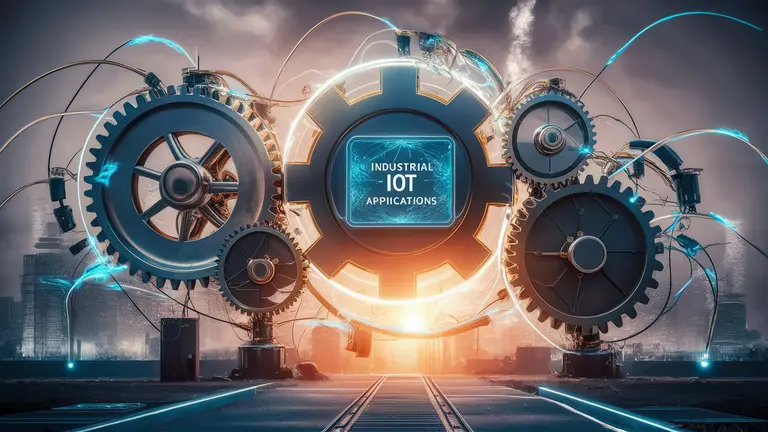The Industrial Internet of Things (Industrial IoT) has emerged as a game-changing force in the manufacturing sector. This groundbreaking technology refers to the network of interconnected sensors, devices, and software that gather and analyze data from industrial equipment and processes. As industries worldwide drive forward toward digital transformation, IIoT solutions have left an indelible impact on production efficiency, asset management, and supply chain optimization.
IIoT is revolutionizing manufacturing by enabling greater efficiency, productivity, and cost reduction. It allows industries to gain operational autonomy and improve reliability through real-time monitoring and data-driven decision making. A typical Industrial IoT setup comprises a set of sensors and devices located throughout a facility, known as the edge, which collect data from various equipment and processes. This data is then converted into actionable insights through advanced analytics platforms.
Benefits of Industrial IoT
Improved Operational Efficiency
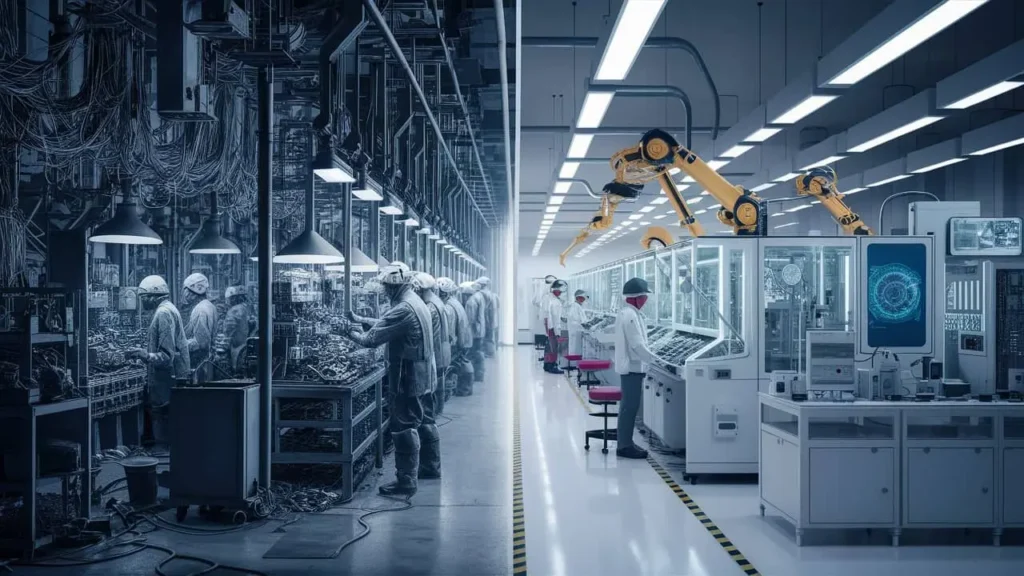
IIoT enhances operational efficiency by collecting real-time data from various equipment and processes. This enables manufacturers to identify bottlenecks, optimize workflows, and reduce downtime. For instance, a smart factory can automatically adjust production schedules based on real-time demand data, minimizing excess inventory and maximizing resource utilization.
Predictive Maintenance
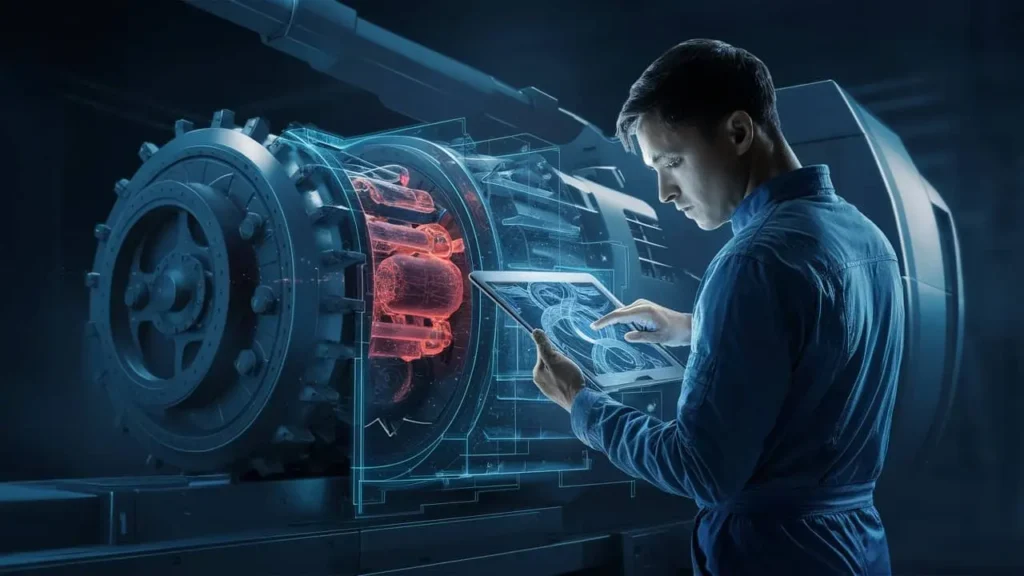
IIoT sensors monitor machine health in real time, predicting failures before they occur. By analyzing data from sensors attached to machinery, manufacturers can schedule maintenance activities proactively, reducing unexpected breakdowns and extending the lifespan of assets. This approach can significantly reduce maintenance costs and minimize production disruptions.
Enhanced Quality Control
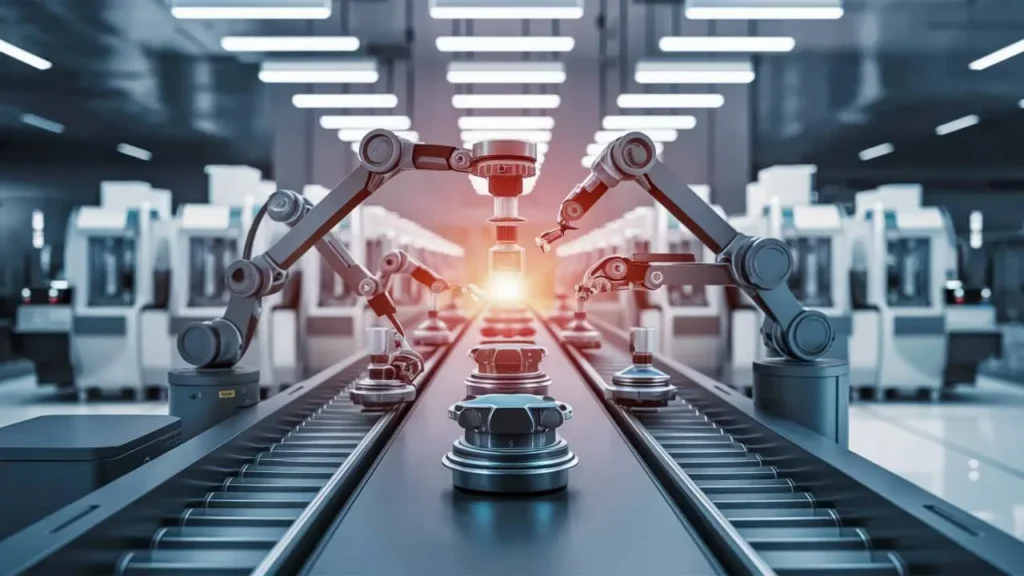
IIoT-enabled systems can automatically detect defects in products during production, reducing waste and enhancing quality. For example, vision systems integrated with IIoT can inspect products at high speeds, identifying even minor defects that might be missed by human inspectors. This ensures consistent product quality and improves customer satisfaction.
Supply Chain Optimization
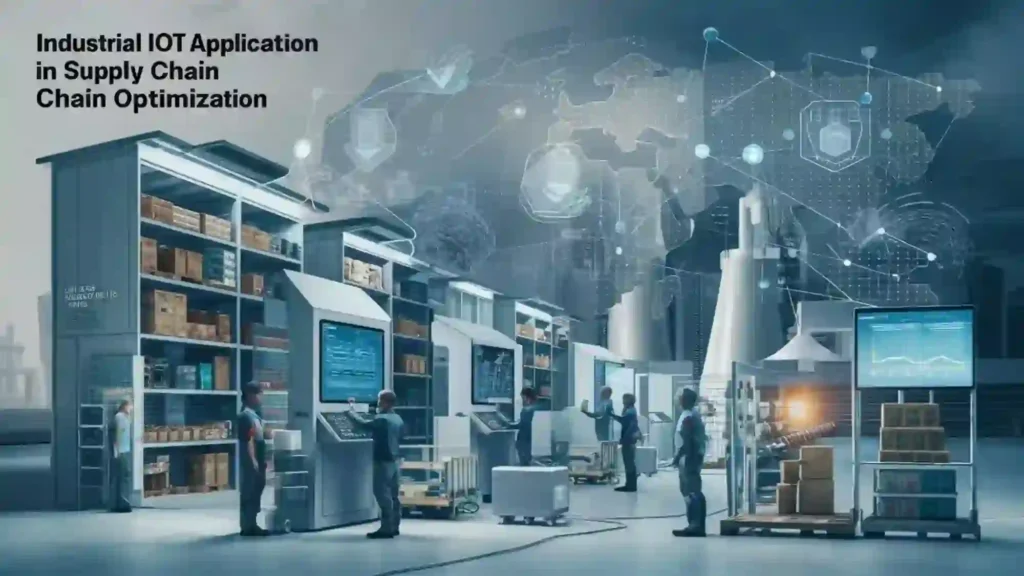
Industrial IoT improves supply chain visibility by tracking inventory levels, monitoring shipments, and predicting demand patterns. Sensors can monitor warehouse conditions, ensuring optimal storage for sensitive goods. RFID tags and GPS tracking provide real-time location data for shipments, enabling more accurate delivery estimates and efficient route planning.
Energy Management
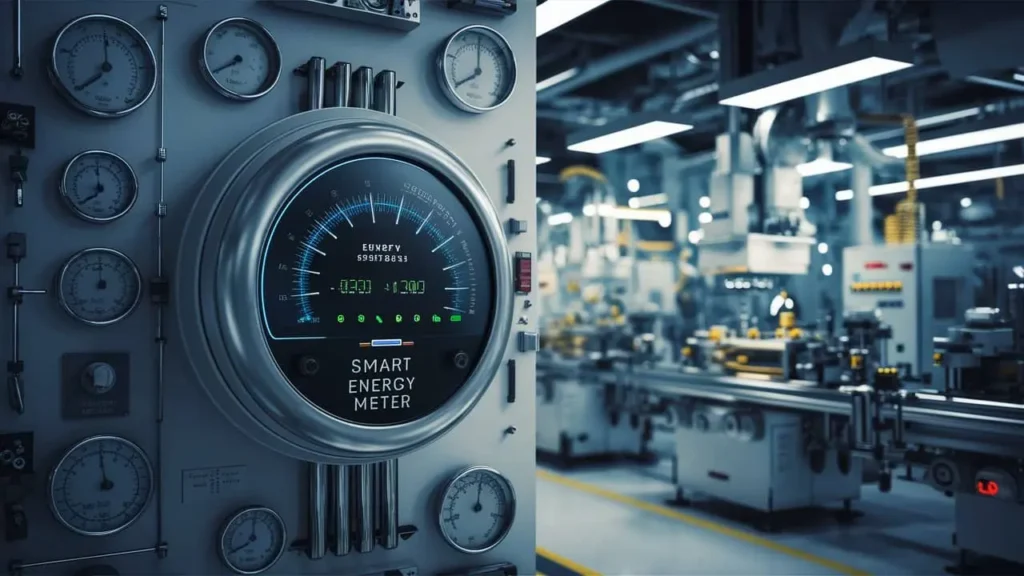
IIoT platforms enable better energy management by monitoring consumption patterns and identifying areas for optimization. Smart meters and sensors can track energy usage across different machines and processes, allowing managers to identify energy-intensive operations and implement targeted efficiency measures. This not only reduces operational costs but also contributes to sustainability efforts.
Components of an Industrial IoT System
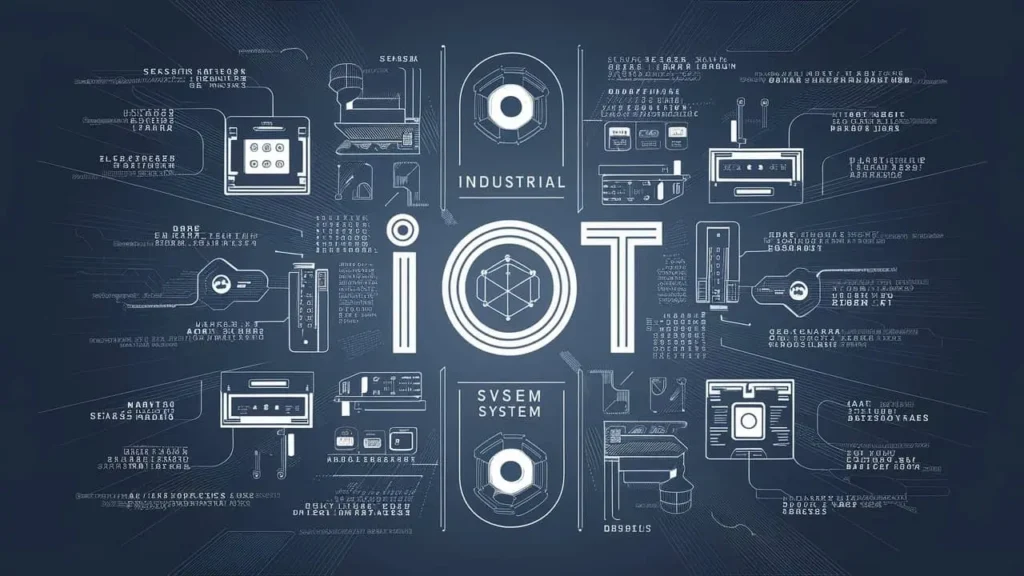
Sensors and Actuators
Sensors are the eyes and ears of an Industrial IoT system, collecting data on various parameters such as temperature, pressure, vibration, and energy consumption. For instance, vibration sensors can detect unusual equipment movements, indicating potential failures. Temperature sensors in storage facilities ensure optimal conditions for perishable goods. Actuators execute commands based on the analyzed data, allowing for automated responses to changing conditions, such as adjusting valve positions or conveyor speeds.
Edge Devices
Edge devices process data at the source, reducing the amount of information that needs to be transmitted to central servers. This edge computing capability enables real-time decision-making and reduces latency in critical applications. For example, an edge device in a manufacturing line can instantly adjust machine settings based on sensor readings without waiting for instructions from a central server, improving response times and reducing network load.
Data Storage and Management
IIoT systems generate vast amounts of data that need to be stored and managed effectively. Cloud platforms and industrial data lakes play a crucial role in this process. They provide scalable storage solutions and enable advanced analytics on historical data. For instance, a manufacturing plant might use a cloud-based data lake to store years of production data, allowing for long-term trend analysis and continuous improvement of processes.
Connectivity Infrastructure
A robust connectivity infrastructure is crucial for IIoT systems. This includes both wired and wireless networks that enable seamless communication between devices, edge computing systems, and cloud platforms. Technologies like 5G are enhancing the capabilities of IIoT by providing faster, more reliable connections. Industrial Ethernet protocols ensure reliable, real-time communication in factory environments, while Low-Power Wide-Area Networks (LPWAN) enable long-range, low-power connectivity for remote sensors.
IIoT Platforms
IIoT platforms serve as the brain of the system, integrating data from various sources, applying advanced analytics, and providing actionable insights. These platforms often include features like data visualization, machine learning capabilities, and application development tools. They allow manufacturers to create custom dashboards and applications tailored to their specific needs. For example, a production manager might use an IIoT platform to view real-time production metrics, analyze trends, and receive alerts about potential issues.
Security Systems
Given the critical nature of industrial data, robust security measures are essential in IIoT implementations. This includes encryption for data in transit and at rest, access control mechanisms to ensure only authorized personnel can access sensitive information, and threat detection systems to identify and respond to potential cyber attacks. Many IIoT systems now incorporate blockchain technology for enhanced data security and traceability, particularly in supply chain applications.
Difference Between IoT and Industrial IoT
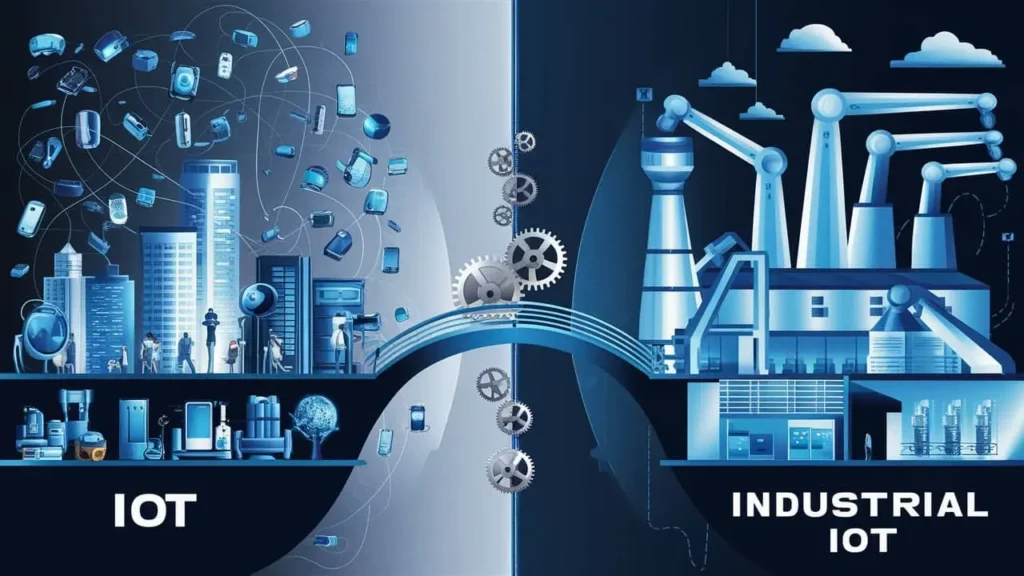
While IoT and Industrial IoT share some similarities, they have distinct characteristics and applications:
Purpose and Environment
IoT typically focuses on consumer applications and smart home devices, such as connected thermostats or smart speakers. These devices enhance convenience and comfort in everyday life. Industrial IoT, on the other hand, is designed for industrial environments like factories, warehouses, and energy plants. It aims to improve operational efficiency, safety, and productivity in industrial settings.
Scale and Complexity
Industrial IoT systems often operate on a much larger scale than consumer IoT, involving hundreds or thousands of connected devices in a single facility. For example, a smart factory might have sensors on every piece of equipment, monitoring various parameters simultaneously. IIoT systems also tend to be more complex, integrating with existing industrial control systems and enterprise software like ERP and MES.
Data Volume and Velocity
IIoT systems generate and process far larger volumes of data at higher velocities compared to consumer IoT. A single industrial machine might generate terabytes of data per day, which needs to be processed and analyzed in real-time to enable quick decision-making. This data is often critical for real-time control of industrial processes and predictive maintenance.
Reliability and Durability
Industrial IoT devices and networks must be more robust and reliable than consumer IoT, as they often operate in harsh environments with extreme temperatures, vibrations, or electromagnetic interference. They support critical processes where downtime can be extremely costly, so they need to be built to withstand these conditions and operate continuously for long periods.
Security Requirements
While security is important for all IoT systems, Industrial IoT typically requires more stringent security measures due to the potential impact of breaches on industrial processes and critical infrastructure. A security breach in an IIoT system could lead to production halts, equipment damage, or even safety hazards, making cybersecurity a top priority in IIoT implementations.
Integration with Legacy Systems
Industrial IoT often needs to integrate with existing industrial control systems and legacy equipment, which can be challenging and requires specialized protocols and interfaces. Many factories have equipment that’s decades old but still functional, and IIoT solutions need to be able to connect to and extract data from these systems without disrupting operations.
Working Mechanism of an Industrial IoT System
Data Collection
High-quality sensors, such as vibration sensors or temperature sensors, are strategically placed on equipment to capture critical data. These sensors are designed to operate in harsh industrial environments and provide accurate, real-time measurements.
Data Processing
The data collected by the sensors is initially processed by data controllers or gateways. These devices ensure the integrity and quality of the data, filtering out noise and irrelevant information. They also format the data for further processing and may perform some basic analytics.
Data Aggregation
The processed data is then aggregated in a central system, often referred to as a data lake or data warehouse. This system serves as a repository for all the data collected across the industrial facility.
Edge Computing
Edge computing devices play a crucial role in processing time-sensitive data locally. They can make immediate decisions based on predefined rules without having to send data to the cloud, reducing latency and bandwidth usage.
Advanced Analytics
The centralized IIoT platform applies advanced analytics, machine learning, and AI algorithms to the collected data. This analysis can reveal patterns, predict future events, and generate actionable insights.
Insight Distribution
These insights are then distributed to relevant stakeholders through customized dashboards, reports, or alerts. For example, a production manager might receive real-time updates on production line efficiency, while a maintenance technician gets alerts about potential equipment failures.
Automated Response
The system can also trigger automated responses based on the analyzed data. For instance, it might automatically adjust machine settings to optimize production or schedule maintenance when certain conditions are met.
System Integration
Many Industrial IoT systems are designed to integrate with existing enterprise systems like ERP (Enterprise Resource Planning) or MES (Manufacturing Execution Systems). This integration allows for a more comprehensive view of the entire operation and enables data-driven decision-making at all levels of the organization.
Challenges and Risks of IIoT Implementation
While Industrial IoT offers numerous benefits, its implementation comes with several challenges and risks that organizations need to address:
Cybersecurity Threats
As IIoT systems connect critical industrial processes to networks, they become potential targets for cyberattacks. A successful breach could lead to production disruptions, data theft, or even safety hazards. Organizations must implement robust cybersecurity measures, including regular security audits, employee training, and advanced threat detection systems.
Data Integration and Management
IIoT generates vast amounts of data from diverse sources, often in different formats. Integrating this data and extracting meaningful insights can be challenging. Companies need to invest in advanced data management and analytics platforms capable of handling large volumes of heterogeneous data.
Legacy System Integration
Many industrial environments still rely on older equipment and control systems that weren’t designed for connectivity. Integrating these legacy systems with modern IIoT solutions can be complex and costly, often requiring custom interfaces or middleware solutions.
Initial Implementation Costs
While IIoT can lead to significant long-term savings, the initial investment can be substantial. This includes costs for sensors, networking infrastructure, data storage, analytics platforms, and skilled personnel. Organizations need to carefully assess the return on investment and may need to implement IIoT solutions in phases.
Skill Gap
Implementing and managing IIoT systems requires a unique skill set combining IT knowledge with domain-specific industrial expertise. Many organizations face challenges in finding or developing talent with these hybrid skills.
Scalability and Reliability
As IIoT deployments grow, ensuring system performance and reliability becomes increasingly complex. Organizations need to design their IIoT architectures with scalability in mind and implement robust monitoring and maintenance processes.
Real-World Case Studies
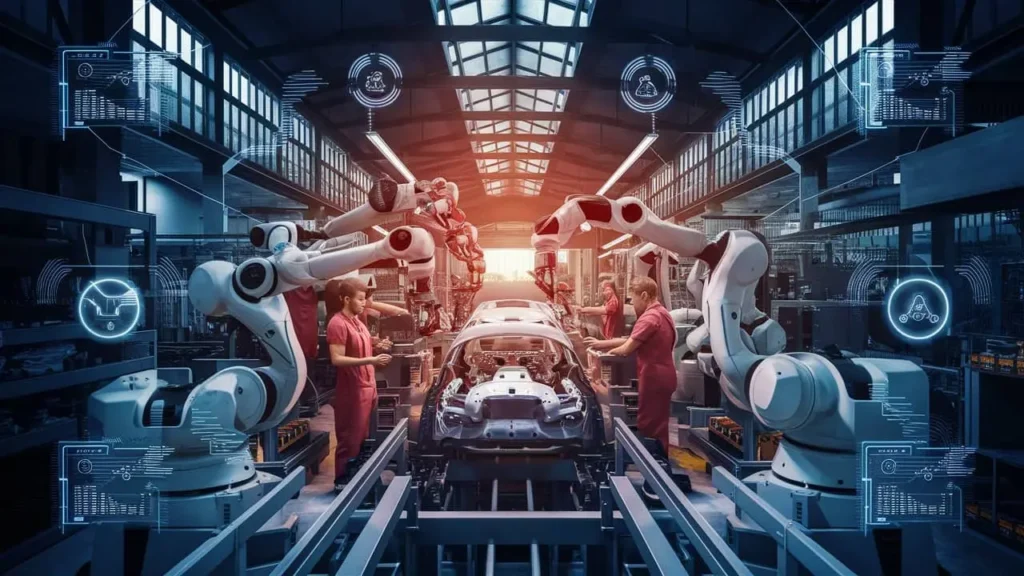
To illustrate the transformative potential of Industrial IoT, let’s examine some successful implementations:
Bosch Rexroth: Connected Manufacturing
Bosch Rexroth, a global supplier of drive and control technologies, implemented IIoT solutions in its own manufacturing facilities. By connecting machines and analyzing real-time data, they achieved:
- 25% increase in productivity
- 10% reduction in energy consumption
- Improved product quality through real-time monitoring and adjustments
The company now offers similar IIoT solutions to its customers, helping them achieve comparable improvements in their manufacturing processes.
Harley-Davidson: Smart Factory Transformation
Motorcycle manufacturer Harley-Davidson implemented IIoT technologies in its York, Pennsylvania plant, resulting in:
- Reduction in production build time from 21 days to 6 hours
- Increased flexibility, allowing customization of motorcycles on the same assembly line
- Real-time production monitoring and quality control
- Significant cost savings and improved efficiency
The IIoT system integrates with the company’s ERP system, providing a comprehensive view of the entire manufacturing process.
Conclusion
Industrial IoT represents a significant leap forward in manufacturing and supply chain management. By harnessing the power of interconnected devices, advanced analytics, and real-time data processing, IIoT is paving the way for smarter, more efficient, and more sustainable industrial operations.
The benefits of Industrial IoT extend far beyond mere operational efficiency. From predictive maintenance and enhanced quality control to improved worker safety and supply chain optimization, IIoT is reshaping every aspect of industrial processes. As industries worldwide continue to embrace digital transformation, the adoption of IIoT solutions is set to accelerate, driving innovation and competitiveness.
The future of Industrial IoT is bright, with emerging technologies like 5G, edge computing, and artificial intelligence set to further enhance its capabilities. We can expect to see increased automation in factories, with machines capable of self-diagnosis and self-optimization. Decision-making will become increasingly data-driven, with AI-powered systems providing insights and recommendations in real-time. The concept of smart factories will continue to evolve, with entire production facilities operating as interconnected, self-adjusting ecosystems.
By embracing Industrial IoT, manufacturers and supply chain operators can position themselves at the forefront of the fourth industrial revolution, ready to meet the challenges and opportunities of the digital age. While the journey towards fully realized Industrial IoT implementation may be complex, the potential rewards – in terms of efficiency, innovation, and competitive advantage – make it a path worth pursuing for forward-thinking industries worldwide.
However, as we’ve seen in the challenges section, implementing IIoT is not without its hurdles. Organizations need to carefully consider the risks and challenges, particularly in areas like cybersecurity, data management, and skills development. A thoughtful, strategic approach to IIoT implementation – one that addresses these challenges head-on – will be key to realizing the full potential of this transformative technology.
As IIoT continues to evolve, we can expect to see even more innovative applications and success stories. The companies that successfully navigate the challenges of IIoT implementation will be well-positioned to lead in the new era of smart, connected manufacturing. By embracing Industrial IoT, manufacturers and supply chain operators are not just optimizing their current operations – they’re laying the groundwork for a future where factories are smarter, more efficient, and more responsive to changing market demands than ever before.

